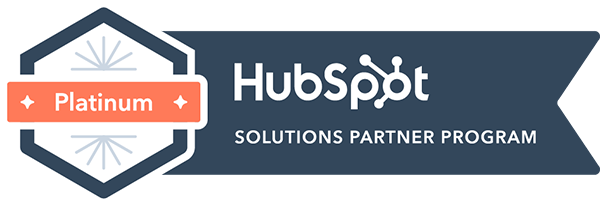
An optimally-functioning website can be an extremely valuable part of your business. It has the capability to draw in new customers, answer their questions, set up appointments and make sales - all without your team having to intervene.
But if your website seems to be underperforming, it can be really stressful trying to find the source of the problem. Your site might not be performing well if it shows any of these signs:
Low site traffic: You could have the most gorgeous, engaging site out there, but if no one sees it, it doesn’t matter. The amount of traffic you need will be specific to your business and goals, but consistent tracking will show you if you’re on the right track.
High bounce rate: A bounce rate tells you what percentage of site visitors leave after viewing one page. The lower the bounce rate, the more engaging your site is. You want to entice visitors to stick around and click on other pages, especially pages that can guide them into a sales pipeline. If your bounce rate is higher than 50 percent, then you might need to beef up your calls-to-action or navigation.
Low lead generation: If your site isn’t bringing as many leads as you need it to, it means there is room for improvement. Look at your site as if you were a potential new customer to find where you could make improvements.
These are just a few of the major signs of a site that needs help. If you’re struggling with these or other signs of an underperforming site, don’t worry; we’ll cover some of the solutions that can bring your site up to speed.
A quick note: We often see business owners making small changes to several areas of their site, hoping to fix the issue. That approach tends to lead to short-term fixes, or no improvement at all. If your site isn’t working the way you want it to, make sure you make improvements piece by piece, giving your site time in between to let the changes work.
Here are some common areas that can turn around an underperforming site:
Calls-to-Action
You work hard to create valuable content on your site that attracts potential new clients, but are you leaving them hanging after they read your post or watch your video? A call-to-action, or CTA, tells site visitors exactly where to go or what to do from there. Every single piece of content you create should have a clear, compelling CTA that ultimately guides a visitor through the buyer’s journey.
Your CTAs might include prompting site visitors to book a call, sign up for your newsletter list, buy a product or reach out for an estimate.
Site Navigation
The average visitor spends 15 seconds on a website. That means you have mere seconds to grab visitors’ attention and show them where to go next.
Your navigation setup is crucial here, because the longer a new visitor has to spend searching for what they need, the likelier they are to click away. Look at your site through the eyes of a potential new customer: have you made it easy for them to find where they need to go? Can they get to the page they need in a couple clicks or less? Make it as obvious as possible for them, and err on the side of simplicity.
Communication
Excellent communication begins the moment someone lands on your site. Can they easily find a phone number, contact form, or online chat? Some visitors will come to your site ready to reach out, so it’s important that they can quickly and easily find how to do that.
If new customers need to book an introductory meeting with you, there are scheduling apps available that can let them choose the date and time that you meet. It also allows a potential customer to take action immediately while they’re on your site.
Clear Messaging
Have you ever visited a company’s website that left you wondering exactly what it is that they do? Anyone who lands on your site should know right away who you help, and how you help them.
Effective messaging goes back to your branding. You have to get really clear on what you offer, who you’re offering it to, how it works, and why you’re offering this product or service in the first place.
Then, you can express clear value propositions. Value propositions combine the qualities of your business with the benefits, and boil it down to the overall value.
For example, if your business offers virtual counseling sessions, then the quality is that it’s convenient, and the benefit is that your customers will receive counseling support. The value proposition would be something like, “Receive mental health support from the comfort of your own home.”
This is a really important clarifying step, because it makes your messaging more succinct and powerful. And when you only have seconds to get that message across, short and sweet can be much more impactful.
Landing Pages
A landing page is a single site page that a visitor lands on after clicking on a piece of marketing. Its purpose is to generate leads, sell a product or gather information. If your landing pages aren’t converting, you might not be following best practices that will bring in more leads.
Successful landing pages tend to have these elements:
A headline that tells the visitor exactly what’s in it for them. How will your offer help them? Make that very clear.
Clear and engaging copy. A landing page is supposed to be persuasive, so create copy that will capture attention and lead your visitor toward the call-to-action.
A relevant offer. Your landing page could be exceptional, but if you’re not offering something people want, your conversion rate will be low.
A responsive format that works well on desktop, mobile or tablet screens.
SEO that helps the landing page show up prominently in search engines.
A thank you page after the offer has been delivered. This tells your visitor what to do next (like “Check your inbox!”) and thanks them for their time and interest.
What’s your diagnosis?
There are so many reasons that a website might - or might not - perform well. We’ve covered some of the most common issues that can hold a site back, but every website and business is unique. Remember to keep your specific customers in mind, and view the website through their eyes. You can also enlist the help of a marketing agency to look at your site with a fresh perspective, and create intentional changes to help you reach your goals.




